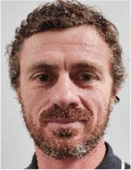Mobile autonomous methane monitoring stations for emission measurement
M. Mainson A C , C. Ong A , M. Myers A and A. Spiers BA CSIRO Energy, Kensington, Australia.
B CSIRO IMT, Urrbrae, Australia.
C Corresponding author. Email: Mederic.Mainson@csiro.au
The APPEA Journal 61(2) 425-428 https://doi.org/10.1071/AJ20148
Accepted: 25 March 2021 Published: 2 July 2021
Abstract
Natural gas has been forecast to continue grow up to 30% for the next 40 years and will remain as a key energy source. Alongside this projected growth, both the government and the industry have committed to reduce emission reductions. A critical focus is fugitive emissions, which are related to leaks or unintended losses of methane from sources such as hydrocarbon production, processing, transport, storage, transmission and distribution. The need for measuring and monitoring these emissions has been recognised in significant environmental inquiries related to the gas industry, such as the Northern Territory Fracking Inquiry (Pepper et al. 2018) and required in section D of the NT Code of Practice. This study describes an autonomous emission monitoring station developed to address the challenge of characterising temporally varying fugitive methane emissions. It has been designed specifically to tolerate the Australian outback’s extreme climateswhile providing laboratory-grade measurements in real-time at locations where there will be no access to grid power and standard telecommunications. Preliminary results demonstrating the continuous real-time measurements of methane and ethane concentrations of temporally varying phenomena will be presented. Specifically, the detection of methane and ethane concentrations and temporal changes related to bushfire progress will be shown.
Keywords: monitoring, methane, baseline, mobile, autonomous, environmental, real-time, emission.

Mederic Mainson has a BSc in Physics from the University of Toulouse, France and a MSc in Engineering from School of Engineering ‘Mines-Telecom’, Saint Etienne, France. Mederic has 20 years of experience of supporting science and scientist through design and engineering of innovative data acquisition system and automated data processing. Mederic has worked for French Research Agency (CNRS), Australian Institute of Marine Science and CSIRO. He is currently applying his skills in offshore and onshore environmental monitoring in the Energy Sector |

Cindy Ong obtained a Mechanical Engineering degree with honours from the University of Western Australia. She practiced as a graduate engineer at BHP before taking up a remote sensing research position at the Department of Land Administration. In 1994, Cindy was offered a research technician position at CSIRO and has since progressed to principal research scientist, concurrently acquiring a PhD degree from Curtin University. She leads the Emissions Prevention, Monitoring and Response Test Bed in the Active Integrated Matter Future Science Platform. Additionally, she coleads the pan-CSIRO project on optical calibration and validation. Cindy is the Chair for the Committee on Earth Observation Satellites Working Group on Calibration and Validation, and the current chair of the IEEE Geoscience Remote Sensing Society Geoscience Spaceborne Imaging Spectroscopy Technical Committee. She is a member of the science advisory group for Germany’s imaging spectroscopy satellite mission (EnMAP), the mission advisory group of the European Space Agency’s candidate hyperspectral mission (CHIME) and the calibration and validation working group of NASA’s surface biology and geology mission. Cindy was involved in the development of and is a member the working group of the GEO Energy and Minerals Societal Benefit Area. |

Andrew Spiers is a Research Software Engineer at the Commonwealth Scientific and Industrial Research Organisation. He has previously worked as a systems engineer at on the NectAR research cloud at Melbourne University and as a systems administrator at the Victorian Partnership for Advanced Computing. He holds an Advanced Diploma in Computer Systems Engineering, is a Red Hat Certified Engineer, and has bachelor’s degrees in Commerce and the Arts. His areas of interest include Python, Kubernetes and databases. |

Matthew Myers is Principal Research Scientist at CSIRO Energy and is based in Perth, Australia. He holds a BS degree in chemical engineering from the California Institute of Technology and a PhD degree in chemistry from Columbia University (New York). Myers has coauthored more than 70 journal publications with an H-index of 20. His research interests include nanotechnology, sensors and polymers and their applications in the oil/gas and environmental monitoring industries. He has been involved with many industry funded projects related to CO2 storage and CO2-enhanced oil recovery. Very recently, he has been involved with research projects looking at the effects of CO2 in faulted reservoirs as well as the development of hydrogel-based materials for CO2 capture (or direct air capture). |
References
Alvarez, R. A., Pacala, S. W., Winebrake, J. J., Chameides, W. L., and Hamburg, S. P. (2012). Greater focus needed on methane leakage from natural gas infrastructure. Proceedings of the National Academy of Sciences 109, 6435–6440.| Greater focus needed on methane leakage from natural gas infrastructure.Crossref | GoogleScholarGoogle Scholar |
Forster, P., Ramaswamy, V., Artaxo, P., Berntsen, T., Betts, R., Fahey, D. W., Haywood, J., Lean, J., Lowe, D. C., Myhre, G., Nganga, J., Prinn, R., Raga, G., Schulz, M., and Dorland, R. V. (2007). Changes in atmospheric constituents and in radiative forcing. In ‘Climate Change 2007: The Physical Science Basis. Contribution of Working Group I to the Fourth Assessment Report of the Intergovernmental Panel on Climate Change’ (Eds. S. Solomon, D. Qin, M. Manning, Z. Chen, M. Marquis, K. B. Averyt, M.Tignor, and H. L. Miller.) p. 106. (Cambridge University Press: Cambridge, United Kingdom and New York, NY, USA.)
IEA (2020). World Energy Outlook 2020. Paris: IEA. Available at https://www.iea.org/reports/world-energy-outlook-2020
Morrison, S., Taylor, A., and Pitt, K. (2020). Gas-fired recovery. Media Release from Prime Minister, Minister for Energy and Emissions Reduction, Minister for Resources,Water and Northern Australia. Canberra: Australian Government. Available at https://www.pm.gov.au/media/gas-fired-recovery
Northern Territory Government (2019). Code of Practice: Onshore Petroleum Activities in the Northern Territory. In: Department of Environment and Natural Resources (NT) and Department of Primary Industry and Resources (Eds.). Northern Territory Government, Darwin. Available at https://depws.nt.gov.au/__data/assets/pdf_file/0011/705890/code-of-practice-onshore-petroleum-activity-nt.pdf
Pepper, R., Anderson A., Ashworth, P., Beck, V., Hart, B., Jones, D., Priestly, B., Ritchie, D., and Smith, R. (2018). Final report of the scientific inquiry into hydraulic fracturing in the Northern Territory. Viewed 08 March 2019, https://frackinginquiry.nt.gov.au/inquiry-reports/final-report.
Saunois, M., Stavert, A. R., Poulter, B., Bousquet, P., Canadell, J. G., Jackson, R. B., Raymond, P. A., Dlugokencky, E. J., Houweling, S., Patra, P. K., Ciais, P., Arora, V. K., Bastviken, D., Bergamaschi, P., Blake, D. R., Brailsford, G., Bruhwiler, L., Carlson, K. M., Carrol, M., Castaldi, S., Chandra, N., Crevoisier, C., Crill, P. M., Covey, K., Curry, C. L., Etiope, G., Frankenberg, C., Gedney, N., Hegglin, M. I., Höglund-Isaksson, L., Hugelius, G., Ishizawa, M., Ito, A., Janssens-Maenhout, G., Jensen, K. M., Joos, F., Kleinen, T., Krummel, P. B., Langenfelds, R. L., Laruelle, G. G., Liu, L., Machida, T., Maksyutov, S., McDonald, K. C., McNorton, J., Miller, P. A., Melton, J. R., Morino, I., Müller, J., Murguia-Flores, F., Naik, V., Niwa, Y., Noce, S., O’Doherty, S., Parker, R. J., Peng, C., Peng, S., Peters, G. P., Prigent, C., Prinn, R., Ramonet, M., Regnier, P., Riley, W. J., Rosentreter, J. A., Segers, A., Simpson, I. J., Shi, H., Smith, S. J., Steele, L. P., Thornton, B. F., Tian, H., Tohjima, Y., Tubiello, F. N., Tsuruta, A., Viovy, N., Voulgarakis, A., Weber, T. S., van Weele, M., van der Werf, G. R., Weiss, R. F., Worthy, D., Wunch, D., Yin, Y., Yoshida, Y., Zhang, W., Zhang, Z., Zhao, Y., Zheng, B., Zhu, Q., Zhu, Q., and Zhuang, Q. (2020). The Global Methane Budget 2000–2017. Earth System Science Data 12, 1561–1623.
| The Global Methane Budget 2000–2017.Crossref | GoogleScholarGoogle Scholar |
Urbanski, S. P., Hao, W. M., and Baker, S. (2008). Chapter 4 Chemical composition of wildland fire emissions. In ‘Developments in Environmental Science Volume 8’. (Eds. A. Bytnerowicz, M. J. Arbaugh, A. R. Riebau, C. Andersen.) pp. 79–107. (Elsevier).


